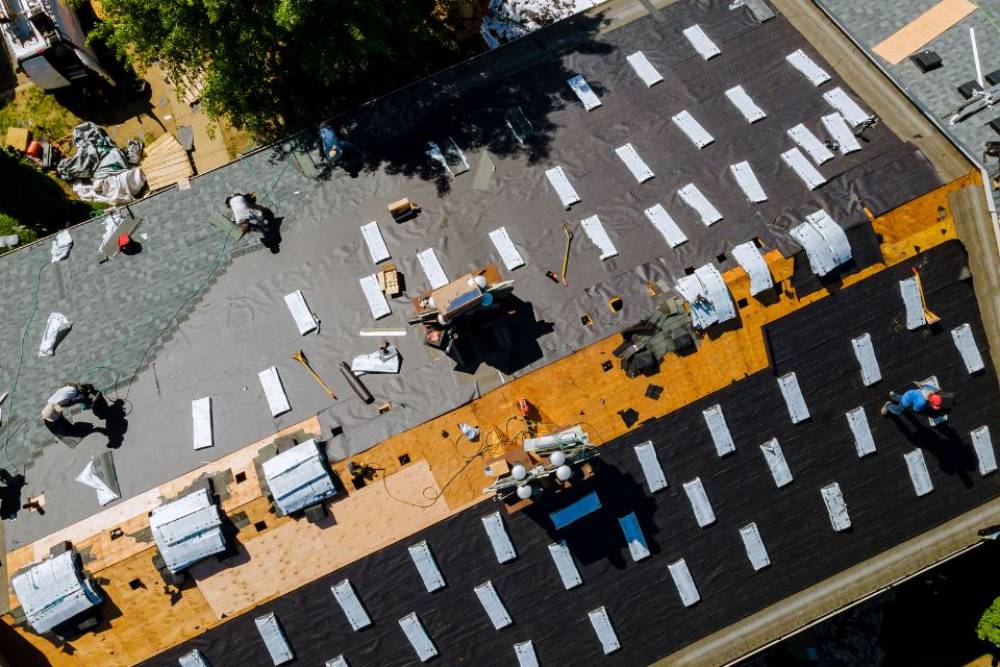
Signs Your Home Needs Roofing Replacement: A Comprehensive Checklist
Maintaining a home involves various responsibilities, and one of the most crucial aspects is ensuring the integrity of your roof. Over time, roofs can succumb to wear and tear due to environmental factors, age, or even poor installation. Recognizing the signs that your roof may need replacement is essential for maintaining the safety and value of your home. We will explore various indicators that suggest it may be time to consider a roofing replacement by Janson Construction of North Augusta, along with actionable steps to help you determine the next action. Understanding these signs can empower homeowners to take preventive measures before small issues evolve into more significant, costly repairs.
Visible Damage and Wear
One of the most apparent signs that your roof may need replacement is visible damage and wear. When you inspect your roof, look for missing, cracked, or curling shingles. Shingles are your roof's first line of defense against weather elements, and any sign of damage can compromise its overall effectiveness. Additionally, check for any sagging areas which may indicate structural issues. These are clear signs of deterioration if you notice exposed underlayment or granules missing from the shingles. Granules protect the shingles from UV rays, and their absence suggests that they have reached the end of their lifespan. Roofs generally last between 20 and 25 years, but environmental factors, such as heavy rain or snowfall, can accelerate wear. If you find multiple shingles in poor condition or widespread damage, it may be time to consult a roofing professional about a potential replacement.
Leaks and Water Damage
Another critical indicator of roofing issues is the presence of leaks and water damage inside your home. Water stains on ceilings or walls often point to roofing problems that require immediate attention. If you notice discoloration or sagging in the ceiling, it may indicate that water has penetrated your roof and is pooling inside. Leaks can lead to more than cosmetic damage; they can also result in mold growth and structural deterioration if left unchecked. During your inspection, pay attention to your home's attic or upper levels. If you see any signs of moisture, mildew, or even puddles, addressing these issues promptly is essential. While occasional leaks can be repaired, persistent or extensive leaks often signal that the roof needs to be replaced entirely. The cost of ignoring these signs can escalate quickly, leading to more extensive repairs and potential safety hazards for your family.
Age of the Roof
The age of your roof is a crucial factor to consider when evaluating its condition. Most roofs have a lifespan ranging from 20 to 50 years, depending on the materials used and the quality of installation. If your roof is approaching or has surpassed its expected lifespan, it may be time to consider a replacement, even if no visible signs of damage are present. Regular maintenance can extend a roof's life, but it's essential to understand that aging materials can lose effectiveness over time. Also, building codes and roofing technologies are continually evolving, which means that newer materials may provide better protection than when your home was built. If your roof is older and has yet to be upgraded or maintained, consider scheduling a thorough inspection to determine its current condition and the need for replacement.
Increased Energy Bills
Unexpected increases in energy bills can also serve as a warning sign that your roof may need to be replaced. An efficient roofing system helps maintain your home’s temperature by providing insulation and preventing heat loss in winter and heat gain in summer. If your roof has developed leaks or has significant wear, it can disrupt this insulation, forcing your HVAC system to work harder to maintain a comfortable indoor environment. As a result, you may notice higher energy costs. Conducting an energy audit can help pinpoint the areas where your home is losing energy, including through the roof. Suppose the audit indicates that your roof's inefficiency is a contributing factor. In that case, it might be wise to consider a roofing replacement to improve your home's energy efficiency and reduce those rising bills.
Moss, Mold, and Algae Growth
Moss, mold, and algae growth on your roof can indicate underlying issues that may necessitate replacement. While some homeowners may view this growth as merely aesthetic, it often shows trapped moisture or inadequate drainage. Moss can retain moisture, which may lead to rot and deterioration of the roofing materials. Algae can also create unsightly stains and damage shingles over time. If you see these growths, it is crucial to act quickly. While some homeowners may attempt to clean the roof or treat the growth with chemicals, it is essential to understand that these measures may only provide temporary relief. If the underlying causes, such as poor ventilation or excessive shade, are not addressed, the problem will likely recur. A roofing professional can provide insights into whether the growth is merely cosmetic or indicative of more severe issues that may warrant a full replacement.
Identifying the signs that your home needs roofing replacement is crucial for maintaining the integrity and safety of your property. By regularly inspecting for visible damage, leaks, and signs of aging, homeowners can take proactive steps to address roofing issues before they escalate. Increased energy bills and moss, mold, or algae growth can serve as additional indicators that warrant attention. Remember that your roof is a vital home component, protecting it from the elements and contributing to its value. If you observe any of these signs, it’s advisable to consult with a roofing professional to evaluate the condition of your roof and discuss the most suitable options for replacement. Taking timely action can save you from more extensive repairs and enhance your home’s safety and efficiency.

